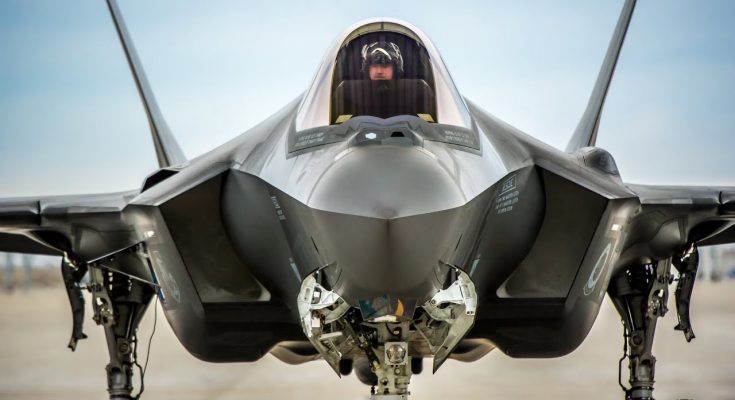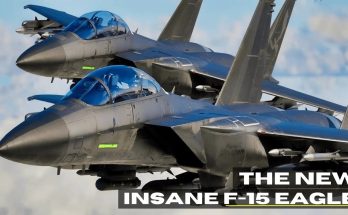USA Didn’t Officially Offer the F-35 to India: A Strategic Analysis
The F-35 Lightning II, developed by Lockheed Martin, is widely regarded as the most advanced fifth-generation stealth fighter in the world. With its unmatched capabilities in air superiority, precision strike, and intelligence, surveillance, and reconnaissance (ISR), the aircraft is a prized asset for any modern air force. However, despite India’s growing defense partnership with the United States, the U.S. has not officially offered the F-35 to India. This decision can be attributed to several strategic, political, and military considerations.
The U.S.-India Defense Partnership
In recent years, the U.S. and India have significantly deepened their defense ties. As part of their evolving strategic relationship, the two countries have engaged in numerous defense agreements, including the Logistics Exchange Memorandum of Agreement (LEMOA) and the Communications Compatibility and Security Agreement (COMCASA). India has also participated in large-scale military exercises with the U.S. and has purchased American defense equipment, including C-17 transport aircraft, P-8I maritime patrol aircraft, and the recently signed agreement to purchase the MQ-9 Predator drones.
However, despite this growing collaboration, India has not been offered the F-35 in a formal sense. Several factors underpin this decision, reflecting both India’s defense needs and the geopolitical considerations at play.
Strategic and Political Concerns
-
Russia and India’s Military Relationship: India has long maintained strong military ties with Russia, which has been a key supplier of defense equipment, including the Su-30MKI fighter jet and the S-400 missile defense system. India’s purchase of the S-400 system in 2018, despite warnings from the U.S., has been a point of contention in the relationship between the two nations. The U.S. has imposed sanctions on countries that engage with Russia’s defense industry under the Countering America’s Adversaries Through Sanctions Act (CAATSA), which would complicate any decision to offer the F-35 to India. This creates a diplomatic balancing act, as India seeks to maintain its defense ties with Russia while also building closer relations with the U.S.
-
India’s Indigenous Defense Programs: India has invested heavily in developing its own indigenous defense technologies, such as the Tejas light combat aircraft and the AMCA (Advanced Medium Combat Aircraft) program. Offering the F-35 to India might be seen as undermining these domestic defense efforts, which are central to India’s long-term strategic autonomy. India’s desire for self-reliance in defense manufacturing has led to hesitations in fully relying on foreign suppliers for critical military hardware.
-
Political Sensitivities: The decision to acquire advanced military equipment like the F-35 also carries significant domestic political implications. In India, there are concerns about becoming overly reliant on a foreign power for key defense assets. Political opposition may view the acquisition of American-made systems as a step towards a more aligned military posture with the U.S., potentially drawing India into the geopolitical orbit of the West. This is particularly sensitive given India’s policy of non-alignment and its complex relationship with neighboring countries like China and Pakistan.
India’s Fighter Jet Needs
India’s primary fighter jet requirements focus on augmenting its fleet with advanced platforms that can address both the evolving threat from China and the ongoing regional rivalry with Pakistan. The Dassault Rafale, which India recently acquired, and the Su-30MKI, provide India with a strong mix of multi-role capabilities. While the F-35 offers unmatched stealth capabilities, India has chosen to focus on its own priorities for its air force, such as improving air superiority and multirole combat capabilities in the context of its immediate security challenges.
Moreover, India’s defense planners are cautious about integrating complex foreign technologies into its air force without ensuring full control and customization. The F-35, with its advanced systems and software, would require significant training and integration efforts. Additionally, issues of technology transfer, maintenance, and operational independence are major considerations for India.
The Geopolitical Landscape
The U.S. may not have officially offered the F-35 to India for geopolitical reasons as well. India’s relationship with China has become increasingly tense, particularly in the aftermath of the 2017 Doklam crisis and the 2020 Galwan Valley clash. However, the U.S. may not want to push India too far toward a security partnership that would alienate China, a rising global power. The F-35, as a symbol of Western military dominance, could be seen as a provocative step in this context, especially as China is ramping up its own fifth-generation fighter programs, like the Chengdu J-20.
The Way Forward
While the U.S. has not officially offered the F-35 to India, it is still possible that in the future, the two countries might engage in discussions about acquiring such advanced technology. However, several factors will continue to play a role in shaping India’s decision: balancing its relationship with Russia, maintaining strategic autonomy, and evaluating its domestic defense needs.
India’s defense priorities will likely continue to be focused on a diverse set of aircraft, including the Tejas, the Rafale, and potentially the Su-57, while maintaining strong partnerships with both the U.S. and Russia. Whether the F-35 will become part of India’s defense strategy remains uncertain, but the evolving U.S.-India relationship and the changing dynamics of global defense will shape the future of such a decision.



